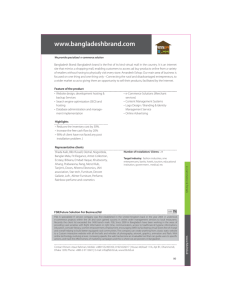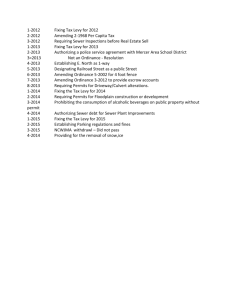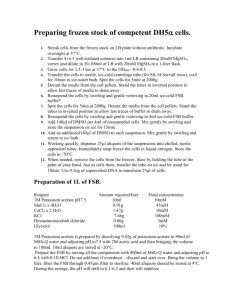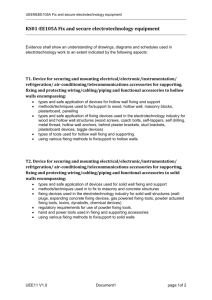New Change FX
advertisement
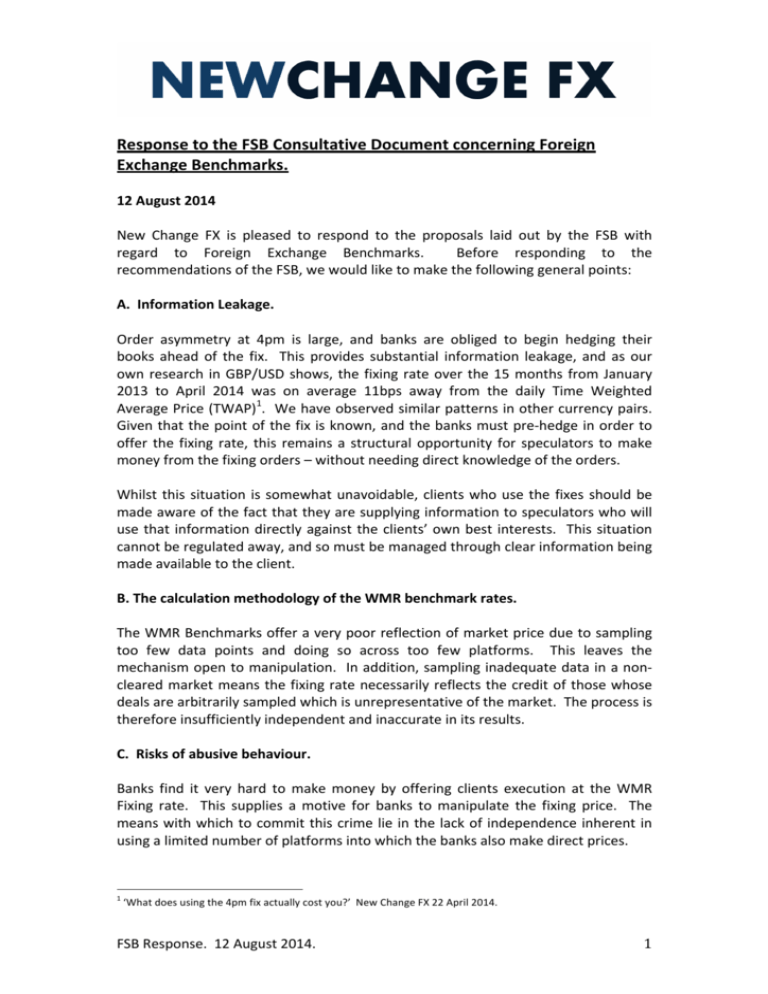
Response to the FSB Consultative Document concerning Foreign Exchange Benchmarks. 12 August 2014 New Change FX is pleased to respond to the proposals laid out by the FSB with regard to Foreign Exchange Benchmarks. Before responding to the recommendations of the FSB, we would like to make the following general points: A. Information Leakage. Order asymmetry at 4pm is large, and banks are obliged to begin hedging their books ahead of the fix. This provides substantial information leakage, and as our own research in GBP/USD shows, the fixing rate over the 15 months from January 2013 to April 2014 was on average 11bps away from the daily Time Weighted Average Price (TWAP)1. We have observed similar patterns in other currency pairs. Given that the point of the fix is known, and the banks must pre-­‐hedge in order to offer the fixing rate, this remains a structural opportunity for speculators to make money from the fixing orders – without needing direct knowledge of the orders. Whilst this situation is somewhat unavoidable, clients who use the fixes should be made aware of the fact that they are supplying information to speculators who will use that information directly against the clients’ own best interests. This situation cannot be regulated away, and so must be managed through clear information being made available to the client. B. The calculation methodology of the WMR benchmark rates. The WMR Benchmarks offer a very poor reflection of market price due to sampling too few data points and doing so across too few platforms. This leaves the mechanism open to manipulation. In addition, sampling inadequate data in a non-­‐ cleared market means the fixing rate necessarily reflects the credit of those whose deals are arbitrarily sampled which is unrepresentative of the market. The process is therefore insufficiently independent and inaccurate in its results. C. Risks of abusive behaviour. Banks find it very hard to make money by offering clients execution at the WMR Fixing rate. This supplies a motive for banks to manipulate the fixing price. The means with which to commit this crime lie in the lack of independence inherent in using a limited number of platforms into which the banks also make direct prices. 1 ‘What does using the 4pm fix actually cost you?’ New Change FX 22 April 2014. FSB Response. 12 August 2014. 1 Manipulation extends far beyond adjustment of price and into more general questions of price and credit provision, all of which a bank can alter via the pricing platforms. D. Failure to achieve Best Execution. There is a common belief amongst asset managers that use of the WMR Fix minimises the tracking error between execution and revaluation rates, ensuring that Best Execution has been achieved. Best Execution should take into account a range of factors but using the fix blindly prioritises the tracking error issue over all other considerations. E. Conclusions. In conclusion, benchmarks will always be required but they must be: 1. Independent – Anyone providing pricing or credit cannot be part of the solution 2. Fit for purpose – Asset Managers need to take responsibility for best execution 3. Transparent – To reduce the opportunity for abuse The FSB should demand that any fixes adhere to these criteria. If a benchmark is abused, the regulator already has the tools to punish criminal market conduct. In order to effect change, the regulator must put the onus on asset managers to demonstrate best execution. The market will then provide various solutions to meet this demand, and competition between them will ensure the best ones survive. Responses to specific recommendations of the FSB: In response to the recommendations made in the FSB Foreign Exchange Benchmarks Consultative Documents, we would like to make the following points. 1. On widening the fixing window: The widening of the window itself will increase risk for banks in trying to achieve the fixing rate. Information leakage will remain an issue. 2. On alternative benchmark calculations: The foreign exchange markets desperately require new benchmarks to replace poor methodologies created 20 years ago. The new benchmarks should reflect changes in technology and the market structure. FSB Response. 12 August 2014. 2 The New Change FX (NCFX) benchmarks sample the markets up to 100 times a second in order to create a mid-­‐rate from real bids and offers. Due to advances in technology there is no need to take a specific point in time as the reference rate because it is possible to calculate a useful, independent mid-­‐rate for every single second of every trading day across most of the market. From that mid-­‐rate any reference data can be extracted, including point-­‐in-­‐time fixes, TWAPs and so on. (We see VWAP as impossible to sensibly implement). NCFX uses robust techniques to ensure that the benchmarks cannot be gamed by banks or brokers, or indeed speculators, and thereby have created a completely new and independent route to a price reference. 3. On changing the fixing windows. There is no point in changing the fixing windows. The issue with the fix is that a poor methodology creates opportunities for non-­‐users of the fix to exploit the market, move prices and affect negatively the pricing experience of users of the fix. Moving the fix to a different time changes none of this. 4. On WMR data feeds. We agree that there should be substantially more data used by WMR in order provide a less biased and manipulable benchmark. To be durable however, the fixing methodology should move away from point-­‐in-­‐time fixing in general, and there should be more than one dominant provider. 5. On Central Bank reference rates. Central bank adherence to principles would be preferable. 6. On order clearing facilities. This is a move towards an exchange structure for FX, which would be beneficial if it could be achieved. 7. On pricing transactions. Banks usually reflect risk in prices but by offering transactions at an unknown fixing price they are unable to do so. We therefore agree that there should be an accepted mid-­‐rate at all times against which clients negotiate a fee directly with the bank to get their business done. We do not believe that a single point in time helps to achieve this transparent and simple means of execution. FSB Response. 12 August 2014. 3

